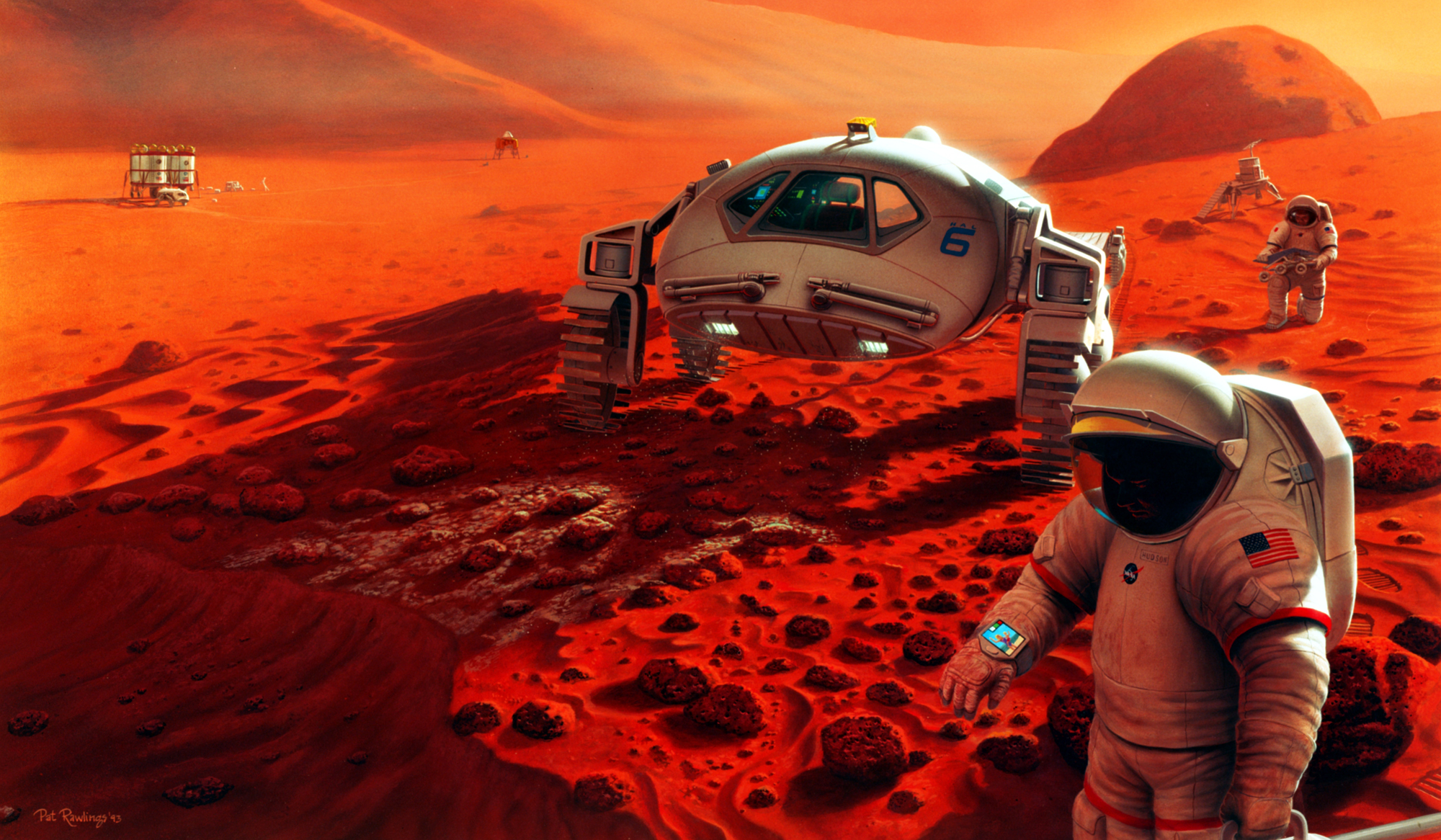Unfazed by radiation
NASA takes it seriously but Elon Musk is undaunted
Mark D. Kaufman • October 21, 2016
Cost isn’t the only reason why NASA sends machines to Mars, not humans. Rovers, probes and landers are immune to the little understood effects of a potent type of space radiation that carries an almost regal title: galactic cosmic radiation.
Presently, the Mars Curiosity rover traverses the red, desert planet at 98 feet per hour, blissfully unperturbed by the galaxy’s incessant energy bombardment. And why should it care? It has no DNA to be ravaged, mutated and deleted by the whims of space radiation.
SpaceX chief executive Elon Musk, who on Sept. 27 presented plans to rocket a colonizing mission to Mars as early as 2024, shows casual regard for this radiation. “There’s going to be some risk of radiation, but it’s not deadly,” said Musk. “There will be some slightly increased risk of cancer, but I think it’s relatively minor.”
NASA holds a considerably different view of the threat posed by galactic cosmic rays, which are high-energy bits of matter speeding unimpeded through space. These tiny particles pass through our skin and organs, leaving behind unwanted energy and wreaking havoc along the way — notably on our genetic material. NASA is concerned because of the biological uncertainty of exposure: Depending on the dose, sickness, cancer or death are possible outcomes.
In 2006, radiation experts Francis Cucinotta of the University of Nevada, Las Vegas, and Marco Durante of the Technical University of Darmstadt found that cancer development is a realistic concern on Mars. Their measurements suggest that if humans spent three years on Mars, one in 20 would eventually die of radiation-caused cancer. And those calculations assumed aluminum shielding, which repels some harmful rays, would protect the astronauts.
NASA finds these levels unacceptable, which is one of the reasons for its vague timeline in sending humans to the red planet, sometime in the 2030s.
In the meantime, the agency is trying to figure out how much radiation is acceptable. The NASA Space Radiation Laboratory at the Brookhaven National Laboratory in New York simulates the types of radiation that humans experience in space. In a 328-foot-long tunnel, the lab delivers beams of radiated particles to mice. But to more accurately mimic the effects of galactic cosmic radiation in humans, NASA recently announced a contest to grow human organ tissue in a laboratory. If someone is successful, this tissue will replace mice in NASA’s radiation lab, improving the agency’s understanding of how human bodies react to different doses of radiation.
The journey to Mars alone will expose travelers to substantial radiation. According to a report in the NASA-sponsored Astrobiology Magazine, the 180-day one-way journey is like getting 24 CT scans — a radiation level 15 times greater than the annual radiation limit for a nuclear plant employee.
For this reason, building better shields is imperative. Musk briefly acknowledged this in his presentation, suggesting hypothetical ideas to protect interplanetary travelers from flares of solar radiation. Reorienting the spacecraft is an option, as is moving space voyagers behind a wall of water, creating a sort of radiation shelter.
However prosaic, plastic shielding may be an important part of our cosmic future. On the Lunar Reconnaissance Orbiter, which has been circling the moon since 2009, NASA found certain types of plastic to be an effective shield against the onslaught of these charged particles. One type reduces a dose of galactic cosmic radiation by about 35 percent, a 10 point improvement over aluminum shielding.
Musk did not reveal if plastic will pad the walls of his spacecraft, but he did announce that a one-way ticket to Mars will cost $200,000. This is a remarkably modest price for space travel, considering that NASA pays Russia $70 million to send one astronaut to the International Space Station.
Until tickets become available, scientists will work to build better radiation shields and understand the consequences of what gets through. For now, we must be satisfied with the pictures Curiosity and other machines send back to Earth, a place – thankfully – that is naturally shielded from dangerous cosmic space rays.

1 Comment
Brings to mind the 15th Century explorers Vasco da Gama and Christopher Columbus.
Perhaps a less than disagreeable thought association.
Kudos In Musk’s direction.